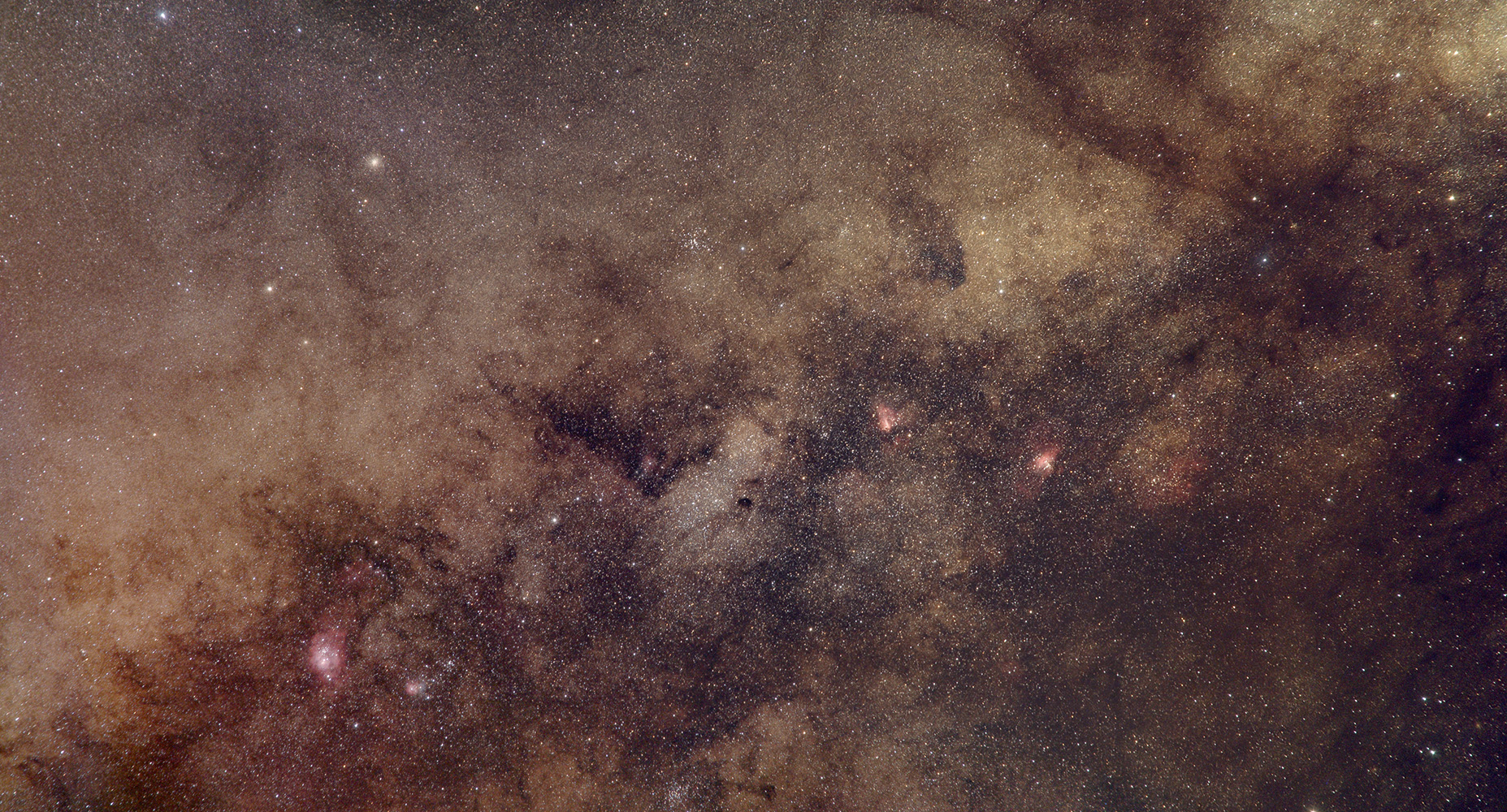
In the photo above, north is to the right and east is up.
The Milkyway consists of billions of stars concentrated towards the plane of our galaxy and seen from within. The sun is located in the plane at a distance of about 8.5 kpc (30.000 light years) from our galaxy's center, which is located towards the constellation Sagittarius. Sagittarius can be seen for mid-northern latitudes low in the southern sky during summer nights. The center of our galaxy, which would be located near the lower left corner on this photograph, can, however, not be seen directly as a lot of gas and dust obscures our line-of-sight. The broad dark lane running from the lower left to the right side of this photograph is such a streak of gas and dust material. Some red emission nebulae and star clusters are superimposed on it, these are nearby "foreground" objects. The emission nebulae are, from left to right: M8, the Lagoon Nebula; M20, the Trifid Nebula; M17, the Omega or Swan Nebula; M16, the Eagle or Starqueen Nebula; and faint NGC 6604. There are also lots of star clusters: M24, the Small Sagittarius Star Cloud near the center of the photograph, M23 at the lower edge and the large globular cluster M22 in the upper left quarter (looking almost like a bright star) are most easily recognized.
 The Summer Milkyway and Mars, standard lens photograph.
The Summer Milkyway and Mars, standard lens photograph.
 M17 - Omega Nebula and Surrounding Area, telelens photograph.
M17 - Omega Nebula and Surrounding Area, telelens photograph.
 M24 - Small Sagittarius Star Cloud and Surrounding Area, telelens photograph.
M24 - Small Sagittarius Star Cloud and Surrounding Area, telelens photograph.
 Saturn, Trifid and Lagoon, telelens photograph.
Saturn, Trifid and Lagoon, telelens photograph.
 M23, Wright-Newtonian photograph.
M23, Wright-Newtonian photograph.
 NGC 6604, HaRGB image.
NGC 6604, HaRGB image.
Exposure Data